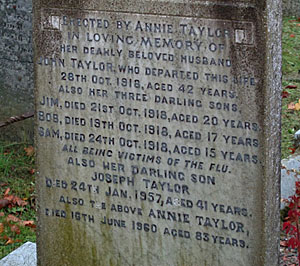 On 15 October 2016 Bangor Historical Society had a very interesting autumn outing down the Ards Peninsula. The Heritage Lottery Fund gave grants to local societies in North Down in connection with the First World War commemorations. Heather McGuicken of the North Down Museum co-ordinated the grant application. This enabled Bangor Historical Society to take the bus trip, which was led by our chairman, Ian Wilson.
On 15 October 2016 Bangor Historical Society had a very interesting autumn outing down the Ards Peninsula. The Heritage Lottery Fund gave grants to local societies in North Down in connection with the First World War commemorations. Heather McGuicken of the North Down Museum co-ordinated the grant application. This enabled Bangor Historical Society to take the bus trip, which was led by our chairman, Ian Wilson.
Our first stop was at Orlock where there was a Naval Lookout Station. Shortly after the war started a sentry was on duty when the regular charabanc came up the hill on the old road from Bangor to Donaghadee. The sentry challenged the driver who did not respond, possibly because he had not heard anything. Unfortunately the sentry then fired at the bus and a young woman was killed. The County Down Spectator reported the events, but attached no blame to the sentry because of the war. There was a general nervousness and fear of invasion at the time.
At a short stop at Donaghadee Mr. Wilson explained that a garden was being created as part of the public realm work there. It was to be named after William Kenny, a VC from the town. He had earned the medal in the North West Frontier of India in 1920 by holding the ground while his men retreated.

Then we travelled to Ballywalter where we visited Whitechurch graveyard. It contains the war grave of Able Seaman Chater. His ship, the Bayano, was torpedoed off Loch Ryan. Bodies were washed up on either side of the Irish Sea. The cemetery contains other interesting memorials. William Stuart of Ballywalter took part in the 1798 rising and was killed in the unsuccessful attack on the Newtownards Market House on 10 June. A Mr. McClean commemorated three sons, whom he lost in the war, on a gravestone in the cemetery. Another aspect of the war was the terrible influenza outbreak at the end. On a memorial Mrs. Taylor recorded the loss of her husband and three children in October 1918.
At Ballyhalbert we heard the story of the U-boat which sat on the surface several miles outside the harbour on 1 and 2 May 1917. It sank eight small ships, but there was no loss of life. The captain asked for the surrender of each ship. It was then boarded, the people taken off and a time bomb placed on board. There were no aircraft in the area to target the U-boat. Among the ships destroyed was the Helen, a coal boat belonging to James Neill of Bangor.
As we left Ballyhalbert and crossed the Ards Peninsula we were able to view airfields built there for the Second World War. The relatively flat ground of the peninsula made it ideal for airfields. Traces of the tarmac runways still remain. Spitfires and Hurricanes were stationed at Ballyhalbert and Polish airmen were based there. Unfortunately this happened too late to be of assistance during the Belfast Blitz. There was also another airfield at Kirkiston, whose control tower is still there.
We finished our fascinating trip with tea and tray bakes at Harrisons before the return to Bangor.
